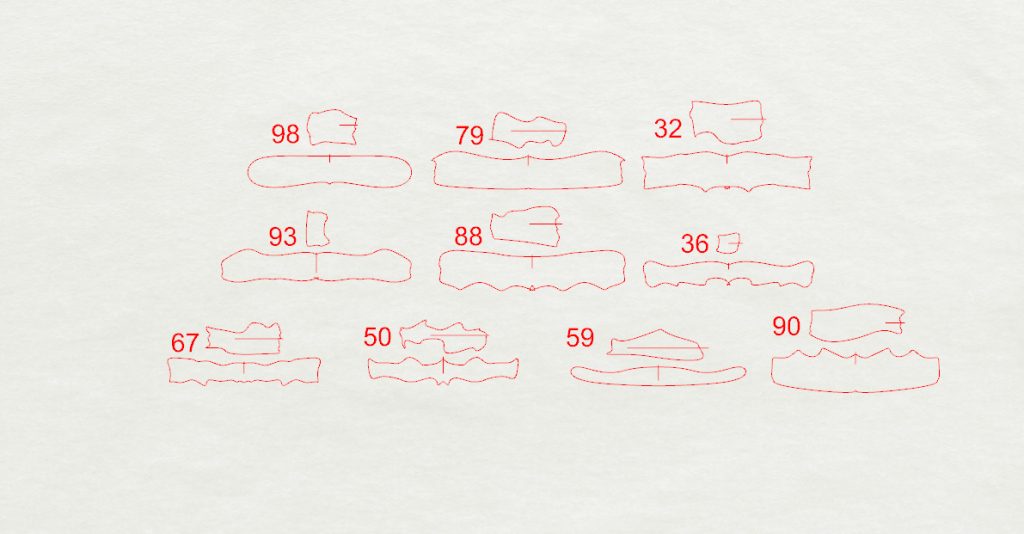Evolution of Flight: Testing

After laser cutting the first generation of planes, I tested how far each one flew. Before I show the results, I have to explain the process I used to test the planes.
When I first conceived this project, I imagined myself throwing the planes like you would a traditional paper plane. However, the more I thought about it, I realized that ensuring a consistent throwing force and angle would be almost impossible to maintain. I decided to drop them from a set height ( 60 inches) and a set angle (50 degrees) so each plane was tested in the same way. In order to achieve my goal of ten feet, a plane would have to glide two feet for every foot that it fell. Below are some photos of my testing setup.
Above you can see me holding the plane as I prepare to let it go. Although not a perfect method of testing, it allowed me to test a wide variety of planes very quickly while minimizing variables. I tested each plane three times and used the average distance across all three throws to further reduce anomalies.
Testing the first generation of planes surprised me in two ways. The first surprise was the distance that some of the planes managed to fly, with the farthest flight being 83 inches. What was more unexpected was the way some of the planes flew. Rather than swooping down like the flight of a traditional glider, some of the planes spiraled forward as they fell, using their rotation to generate lift. In a way, the spiraling planes have already showed the potential of using computers to help us be more creative. I would be hard pressed to find a designer who would have created planes that spiral forward and yet this method is almost as effective as the traditional swoop.
Above are the results of the testing in order of furthest average flight. There is a large range in flight distance , from 88 inches to just one inch. It is no surprise that the planes with the largest wing spans are the ones that fly the furthest and the ones with smaller and more complex wings struggled the most. The position of the wing relative to the fuselage also made a big difference, as number 90’s poor performance shows. As I continue to test generations of airplanes, I hope to see them flying further and further. I can’t wait to see what surprises turn up next.




Leave a Reply